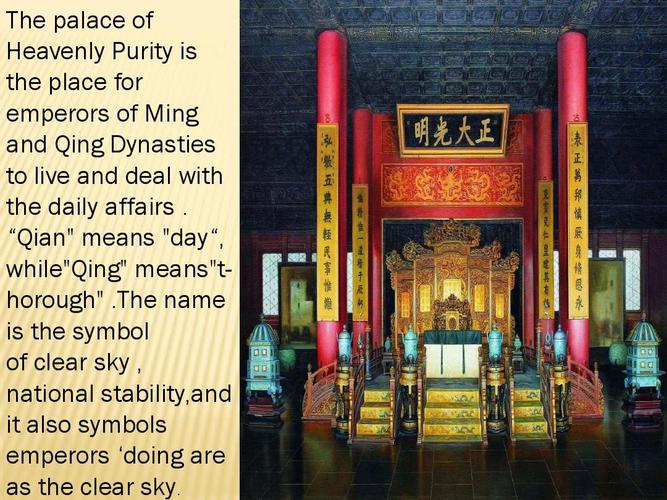Title: English Translation of Beijing's Forbidden City
Introduction:
The Forbidden City, also known as the Palace Museum, is a historic imperial palace complex located in the heart of Beijing, China. Spanning over 180 acres and boasting over 9,000 rooms, it is one of the most wellpreserved and largest ancient palaces in the world. Translating the name "故宫" into English can be challenging, as it carries a rich cultural and historical significance. However, the commonly used translation for "故宫" in English is "Forbidden City."
1. Historical Background:

The Forbidden City was commissioned by Emperor Yongle of the Ming Dynasty in 1406 and completed fourteen years later in 1420. It served as the imperial palace for 24 emperors of the Ming and Qing Dynasties until the abdication of the last emperor in 1912. The importance of the Forbidden City in Chinese history and culture makes accurate translation crucial.
2. Translation Options:
a) Forbidden City:
The translation "Forbidden City" effectively conveys the essence of the original name and reflects the historical context. It refers to the exclusive access granted only to the imperial family and their entourage, with common people forbidden to enter without permission. This name has been widely used in Englishspeaking countries and is easily recognizable to international visitors.
b) Palace Museum:
Another suitable translation is "Palace Museum," which emphasizes the palace's transformation into a museum. After the abdication of the last emperor, the Forbidden City was converted into a museum in 1925, housing extensive collections of imperial treasures, artworks, and artifacts. This translation highlights its cultural significance and the vast collection it holds.
3. Considerations and Justifications:
When translating "故宫" as the Forbidden City, the emphasis is on the historical context and the exclusivity of the palace. It reflects the unique status it held as the imperial residence for centuries. On the other hand, translating it as the Palace Museum emphasizes its current role as a museum showcasing China's imperial heritage. Both translations have their merits and can be used interchangeably depending on the context.
4. Suggestions for Usage:
a) For academic or historical discussions in English, it is recommended to use "Forbidden City" to maintain consistency and accuracy with existing literature and references.
b) When promoting tourism or providing information to international visitors, using both translations, such as "The Forbidden City (Palace Museum)," can help convey the dual nature of the site as both a historical palace and a museum.
c) In official documents or formal contexts, it is essential to establish a consistent terminology with relevant authorities and use their preferred translation, which can vary depending on the institution and its guidelines.
Conclusion:
The translation of "故宫" into English as the Forbidden City effectively captures the historical connotations and exclusivity of the imperial palace complex. However, the translation "Palace Museum" also highlights its present role as a museum. Balancing the historical and cultural significance of the site, both translations can be used interchangeably depending on the context, audience, and purpose.
文章已关闭评论!
2025-04-05 22:55:43
2025-04-05 22:37:33
2025-04-05 22:19:32
2025-04-05 22:01:24
2025-04-05 21:43:08
2025-04-05 21:24:48
2025-04-05 21:06:40
2025-04-05 20:48:17